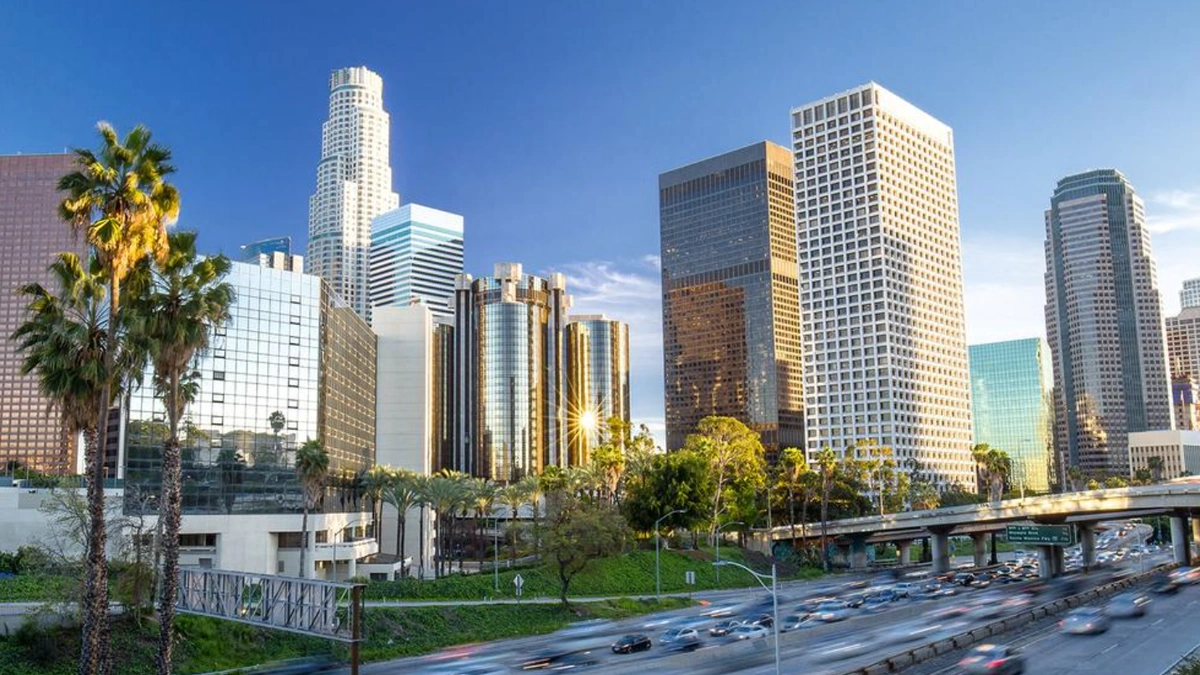Ah, Los Angeles weather . The land of eternal sunshine, right? Well, not exactly. While the brochures might paint a picture of endless beach days, the reality is a bit more nuanced – and frankly, a lot more interesting. What fascinates me is how LA’s weather, seemingly predictable, throws curveballs that can catch even seasoned Angelenos off guard. Today, we’re not just looking at forecasts; we’re diving deep into the “why” behind LA’s unique climate.
The Mediterranean Magic (and Its Quirks)

Los Angeles enjoys a Mediterranean climate, which basically means mild, wet winters and warm, dry summers. Sounds idyllic, doesn’t it? But this label hides a multitude of sins – or, rather, microclimates. What many don’t realize is that the urban heat island effect drastically alters temperature and air quality throughout the LA basin. But, let’s break down the core elements and what makes LA, well, LA. This Mediterranean setup is the foundation, but the surrounding geography is where things get spicy.
Mountains, Ocean, and the Inversion Layer | A Tricky Trio
The combination of the Pacific Ocean, the surrounding mountains (the San Gabriels, specifically), and the infamous inversion layer is what dictates much of LA’s weather. The ocean moderates temperatures, keeping things relatively mild year-round. But, those mountains? They block storms coming from the east, leading to drier conditions. And the inversion layer? Oh, that’s the real party pooper. It traps pollutants close to the ground, contributing to smog and influencing temperature variations. It’s like a lid on a pot, trapping everything underneath. This is also why understanding coastal weather patterns is so important.
And, because of these geographical factors, the weather patterns can shift so quickly.
Santa Ana Winds | When LA Gets Wild
Speaking of wild, let’s talk about the Santa Ana winds. These hot, dry winds blow in from the desert, turning LA into a tinderbox and dramatically increasing the risk of wildfires. They’re also responsible for some of the most uncomfortable weather conditions, bringing temperatures soaring and humidity plummeting. What’s fascinating is how quickly they can change the landscape – literally and figuratively. One minute, you’re enjoying a pleasant breeze; the next, you’re battling fierce gusts and worrying about brush fires. The effects of wildfire season are undeniable.
Microclimates | LA’s Best-Kept (Weather) Secret
Here’s the thing about Los Angeles: it’s not just one climate; it’s a collection of microclimates. The beach communities might be cool and breezy, while the valleys bake in the sun. Even within a few miles, you can experience drastically different weather conditions. This is due to variations in elevation, proximity to the ocean, and the sheltering effects of the mountains. As per the guidelines mentioned in the information bulletin, knowing your specific neighborhood’s microclimate is crucial for planning your day. You might need a sweater in Santa Monica but be perfectly comfortable in shorts in downtown. Navigating weather forecasts near me becomes an hyper-local exercise. But knowing what to expect is the key.
So, before you head out, check the forecast for your specific area. You might be surprised by what you find.
The Future of LA Weather | Climate Change and Uncertainty
Let’s be honest: the future of climate change impacts on Los Angeles weather is uncertain. While scientists can make predictions, the exact details are still hazy. What we do know is that temperatures are likely to rise, rainfall patterns may become more erratic, and the risk of extreme weather events – like heatwaves and droughts – will likely increase. What fascinates me is how LA will adapt to these changes. Will we see more water conservation efforts? Will we need to invest in more infrastructure to protect against wildfires? The answers to these questions will shape the future of the city.
And because of that, being aware of resources like climate resources is all the more important.
Understanding the intricacies of Los Angeles weather is more than just knowing whether to grab a jacket or sunglasses. It’s about understanding the complex interplay of geography, climate patterns, and human influence. It’s about appreciating the unique challenges and opportunities that come with living in a city shaped by its environment. So, next time you check the forecast, remember there’s more to it than meets the eye. Air quality forecasts will become increasingly important as well.
FAQ | Decoding Los Angeles Weather
What causes the marine layer in Los Angeles?
The marine layer is caused by cool, moist air from the Pacific Ocean interacting with warmer air inland, creating fog and low clouds.
How hot does it get in the San Fernando Valley during the summer?
During the summer, temperatures in the San Fernando Valley can easily reach the 90s and even exceed 100 degrees Fahrenheit.
What’s the best time of year to visit Los Angeles for good weather?
Spring and fall generally offer the most pleasant weather, with mild temperatures and less chance of extreme heat or cold.
What if I want to know about LA’s historic weather?
Check the national weather service archives!
Why is LA so prone to droughts?
Southern California receives relatively little rainfall, and much of its water supply relies on imported sources, making it susceptible to droughts.
Are there any significant differences between Southern and Northern California weather?
Yes, Northern California generally experiences cooler temperatures and more rainfall compared to Southern California’s warmer and drier climate.




